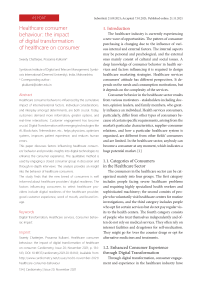Healthcare consumer behaviour: the impact of digital transformation of healthcare on consumer
Автор: Sweety Chatterjee, Prasanna Kulkarni
Журнал: Cardiometry @cardiometry
Рубрика: Report
Статья в выпуске: 20, 2021 года.
Бесплатный доступ
Healthcare consumer behavior is influenced by the cumulative impact of internal/external factors. Individual considerations, and interplay amongst determinants, are both crucial. Today, customers demand more information, greater options, and real-time interactions. Customer engagement has become crucial. Digital Transformation with emerging technologies like AI, Blockchain, Telemedicine, etc., helps physicians, optimizes systems, improves patient experience, and reduces human errors. This paper discusses factors influencing healthcare consumers’ behavior and provides insights into digital technologies to enhance the consumer experience. The qualitative method is used by engaging a closed consumer group in discussion and through in-depth interviews. The analysis provides an insight into the behavior of healthcare consumers. The study finds that the new breed of consumers is well informed about healthcare providers’ digital readiness. The factors influencing consumers to select healthcare providers include digital readiness of the healthcare provider, good customer experience, word of mouth, and brand image.
Digital Transformation, Healthcare services, Consumer behavior, Impact
Короткий адрес: https://sciup.org/148322442
IDR: 148322442 | DOI: 10.18137/cardiometry.2021.20.134143
Текст научной статьи Healthcare consumer behaviour: the impact of digital transformation of healthcare on consumer
Sweety Chatterjee, Prasanna Kulkarni. Healthcare consumer behaviour: the impact of digital transformation of healthcare on consumer. Cardiometry; Issue 20; November 2021; p. 134143; DOI: 10.18137/cardiometry.2021.20.134143; Available from: healthcare-consumer-behaviour
The healthcare industry is currently experiencing a new wave of opportunities. The pattern of consumer purchasing is changing due to the influence of various internal and external factors. The internal aspects may be personal and psychological, and the external ones mainly consist of cultural and social issues. A deep knowledge of consumer behavior in health services and factors influencing it is required to design healthcare marketing strategies. Healthcare services consumers’ attitude has different perspectives. It depends on the needs and consumption motivations, but it depends on the complexity of the services.
Consumer behavior in the healthcare sector results from various motivators - stakeholders including doctors, opinion leaders, and family members, who greatly influence an individual. Health services consumers, particularly, differ from other types of consumers because of certain specific requirements, arising from the market’s particular characteristics, supplier-consumer relations, and how a particular healthcare system is organized, are different from other fields’ consumers and are limited. In the healthcare sector, anybody can become a consumer at any moment, which indicates a huge potential market. [1]
1.1. Categories of Consumers in the Healthcare Sector
The consumers in the healthcare sector can be categorized mainly into four groups. The first category includes people facing severe healthcare problems and requiring highly specialized health workers and sophisticated machinery; the second consists of people who voluntarily visit healthcare centers for routine investigations, and the third category includes people who opt for certain services but do not pay regular visits to the health centers. The fourth category consists of people who treat themselves independently and often do not rely on medical services. They often rely on internet facilities and drugstores for self-medication. They might go for ‘over the counter drugs or opt for alternative medicines and treatments.
1.2. Enhanced Consumer Experience through Digital Transformation
Through digital transformation, consumer engagement and experience in the healthcare industry have improved. It is quite evident that for many years healthcare sector has operated on an experiential level where consumers mainly relied on the expertise of doctors or other healthcare service providers. Customer engagement was when needed, with a minimum level of transparency within the ecosystem. Hence, digital engagement was not required. Today, the scenario is evolving. Consumers in the sector constantly compare their digital experiences and have expectations of quality service. [2]
The entry of non-traditional healthcare providers has completely changed this scenario. Another important factor accelerating this change is the introduction of disruptive technologies in the healthcare sector. These include wearable monitoring and reporting devices, remote nursing and care, VR (virtual reality) and AR (augmented reality for medical diagnostics and treatment, and Artificial Intelligence application for treatment and personalized prescriptions. Technology companies like Amazon, Apple, and Google, are fast dominating the sector. They are experts in the consumerization of entire sectors, which has created innumerable opportunities in the healthcare sector for customer engagement.
A well-informed consumer base will immensely benefit the health and wellness sector. Better customer engagement and more dynamic decisions making will lead to greater wellbeing.
The discovery and application of disruptive technology drive the development of medical devices. Consumers are experiencing a major change as technology companies obtain approvals for such devices from Food and Drug Administration (FDA). This market segment has witnessed technology transformation that caters to domestic use, for example, portable monitors for electrocardiograms and blood glucose connected to smartphones.
The democratization of consumer health data reinforces the consumer’s ownership of large data based upon customer behavior. For example, a scenario where the healthcare provider enables the consumer to share health attributes like heart rate, sleeping patterns, physical activity details, etc., through a wearable device. A new algorithm can be derived that summarizes and highlights problems that will allow the physician to gain insight into their habits and support the consumer in their health journey. All of this will ultimately help to provide a better diagnosis. [3]
1.3. Digitization Improving Healthcare Engagement
The healthcare industry needs to stop thinking of people as patients and engage them as empowered and informed customers. The consumer is supposed to make decisions about their health, though they are undergoing medical treatment. Digital healthcare can make understanding easier and accelerate consumers’ engagement and enable healthcare providers to make better diagnoses.
“Artificial intelligence (AI) and machine learning will leverage massive amounts of data to power greater insights, improve diagnosis and treatment, and support consumer health decisions. Digitization of the healthcare experience will simplify the consumer’s experience because the data -- whether it is recent test results or heart rate data from a wearable device -- will be immediately accessible versus today’s experience of having to answer repetitive questions and get re-tested for things like blood pressure at every visit. The linchpin in this transformation is a new way of thinking about health data. It must be cloud-based, owned by the consumer, and available to share with their healthcare professionals and family members. A centralized, private, and secure cloud-based Electronic Health Re-cord(EHR) will open up the ability for healthcare providers to deliver a simple, contextualized and personal experience that supports consumers in maximizing their whole health.” [4]
2. Objective of the Paper
This paper focuses on consumer behavior in the healthcare sector and how the digitization of healthcare services impacts consumers at large. It discusses various factors influencing the behavior of consumers in the healthcare sector. The paper discusses the digital transformation in the healthcare landscape and provides insights into how healthcare services adopt various technologies to enhance the consumer experience.
3. Literature Review 3.1. Factors Influencing Consumer Behaviour in Healthcare:
Various factors impact consumer behavior in the healthcare industry; service quality is one of the most important aspects influencing a consumer. There are five aspects of service quality which include various tangibles like Physical facilities and equipment, and intangibles such as the appearance of service providers, Reliability (Ability to provide dependable and appropriate service), Responsiveness (Prompt customer assistance), Assurance (Ability and competence of service providers to get patient trust) and Empathy (personal care with an understanding of patient problems), and [5] whether a consumer will revisit the healthcare provider also largely depends on how much the consumer likes or dislikes the service after experiencing it. Also, Word of Mouth (WOM) Communication is important for persuading consumers to visit the same healthcare provider again. In some cases, WOM has been identified as one of the major influential factors in consumer repurchase decisions and a vehicle to express satisfaction or dissatisfaction with a service experience. Another construct that plays an important role is the ‘repurchase intention,’ which is considered a personal aim to sustain a relationship with the same service provider (in this case, it will be the healthcare employee). In this case, also, WOM is a driving factor. Healthcare providers need to provide service that is sufficient and dependable.
Proper care in healthcare has become an important factor for patient satisfaction. Health care services have to be a client (patient) oriented. The key factors that affect patient satisfaction relate to admission diagnostics, service provider behavior, hygiene, quality of nurses, nourishment provided, dialogue, physician interaction, attitude-behavior, and accessibility of maintenance and housekeeping staff. Healthcare service providers must aim at the best possible services for all patients.
3.2. Impact of Healthcare 2.0 on Consumers
Healthcare 2.0 is a network of applications and services delivered through the Web, which provides up-to-date information and services based on data generated from commercial and individual sources. It also empowers the consumer and helps create a user-rich experience. Personal Health Records (PHRs) enable patients to track their health-related information and take control of their health. The Internet has provided consumers with easy access to health information.
The new breed of consumers who have greater access to information about the healthcare systems has redefined the patient-physician relationship. Seamless exchange of medical information of patient’s health through various mediums like healthcare portals, web
136 | Cardiometry | Issue 20. November 2021
pages of the healthcare provider, and e-mails helps in better health communication. Consumers are more engaged and seek more information related to their health as well as healthcare systems. Healthcare 2.0 provides a platform that helps consumers stay connected through blogs and other web-connected platforms and addresses several medical conditions outside the physician’s office. Decision-making related to healthcare is affected majorly due to more awareness on the consumer’s part. [6]
Telehealth and Web 1.0 aims to reduce the gap between the patient and healthcare provider. The online medical record helps in compliance with standard protocols for treatment. Telehealth systems help in reducing costs in home health agencies. Healthcare providers also provide portals to schedule appointments with physicians, demand renewals for prescriptions, access lab test results, and access their health records online.
3.3. Digital Transformation in Healthcare Sector
The healthcare sector is rapidly moving towards digitization and data analytics on a large scale. Data provides a scientific approach to healthcare. Diagnostics are insufficient without scanning and imaging; treatments depend on data analysis of clinical and epidemiological research. Management of data and its volume is no more challenging. The healthcare model is increasingly shifting towards patient-centric designs, which has encouraged healthcare digitization, leading to mobile health (mHealth). It comprises mobile apps, mobile-connected wearable and wireless gadgets, hand-held scanners, and technologies using miniaturized sensors.
The healthcare industry has come a long way from paper-based methods to cloud-based servers to accommodate medical records in a secured manner with some integration level to other systems. We are looking at more precision in medicines and better health care, more accurate and speedier diagnosis. More and more healthcare organizations are adopting blockchain to provide transparency and security of medical data. It helps to improve patient’s data privacy and store their medical records securely in digital format. [7]
Digital transformation in the healthcare industry has accelerated innovation in healthcare services. Technologies like Augmented Reality (AR) have much potential to transform healthcare processes and healthcare management. AR smart glasses such as Microsoft HoloLens, help in augmenting the user’s field of view with virtual information, it can be operated hands-free and will not interfere during the work of the doctors while providing access to an information system.
4. Research Methodology
The Research Methodology adopted to achieve the objective of the research paper is qualitative research. The methods used are closed group discussion and in-depth interviews. The closed group discussion was held among consumers of different age groups. The in-depth interview was held in two parts. In one part, consumers of different age groups were interviewed, and their opinions were recorded. In the second part, people working in the healthcare sector (including doctors) were interviewed, and their opinions were recorded. [8]
4.1. Research Questions
Part 1 (Closed Group Discussion)
-
1. Personal Information Details such as Name, E-mail
-
2. How often do you visit a healthcare center?
-
3. How often do you refer to online sources for medication?
-
4. What are your criteria for selecting your healthcare provider?
-
5. Are you satisfied with your current healthcare provider?
-
6. As a consumer, what is/are the factor/s for choosing your healthcare provider?
-
7. Do you prefer to revisit the same healthcare provider?
-
8. Is your healthcare provider digitally well equipped?
-
9. Are you aware of the technologies used by your healthcare provider to enhance customer experience?
-
10. If yes, can you mention the technology used by your healthcare provider?
-
4.1.1. Research Analysis (Part 1)
Id, Gender and Age Group
A group of forty consumers was identified and engaged in a closed group discussion. The age group of the consumers is between 24 and 50 years. Their opinions were recorded and have been presented in a graphical format for better understanding. The consumers were divided into five groups, and their opinions towards each of the questions were noted to understand their perspective. The main objective to carry out this group discussion is to understand consumers’ category, awareness towards technologies, and the impact of digitizing healthcare on them. Points of discussion from each of the groups were compiled. An online questionnaire was floated just before the discussion to collect data. [9]
Question 1- Personal Details
-
• Gender Division
The Gender ratio among the sample size has been represented in a pie chart shown in Figure 1 below.
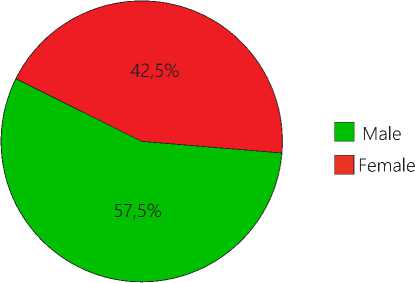
Figure 1: Gender Division
-
• Age Group
The age group considered for the study is 1827 years, 28-37 years, 38-47 years, 48-57 years, and 58 years and above. Figure 2 shows the Age Group.
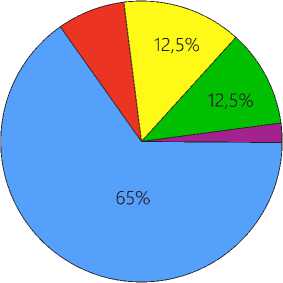
□ 18-27 years
■ 28-37 years
□ 38-47 years
□ 48-57 years
I 58 and above
Figure 2: Age Group
Question 2
This question helped analyze the frequency of visits made by the consumers, which gave an idea about users’ categories. As shown in Figure 3, the consumers (30%) visited the healthcare center once a quarter. [11]
Summary of Discussion:
-
• Most of the consumers visited the healthcare center once a month.

J Once in two weeks □ Once in a month □ Once in quarter ■ Once in six months □ Once in a year
Figure 3. Frequency of Visit to Healthcare Centre
prefer going to the pharmacy or to a doctor to get advice on medicines.
Question 4
This question helped to understand the criteria for selecting healthcare providers, giving a clear understanding of whether the consumers prefer reputed hospitals, local clinics, family doctors, or any other healthcare provider. As depicted in Figure 5, the majority of the consumers (60%) prefer to go to reputed hospitals like Fortis, Apollo, etc. [12]
-
• The consumers mainly belonged to the second category of healthcare consumers, including people who voluntarily visit healthcare centers for routine investigations, which mainly comprised of the age group which was 18-27 years and 27-37 years.
-
• The consumer group aged 38 years and above was frequent visitors to the healthcare center due to some major healthcare problems.
Question 3
This question also helped to analyze the consumer category, which also helped to understand whether the consumers considered online sources to be reliable for medication. It can be seen from Figure 4 that 37.5% of the consumers refer to online sources for medication sometimes. [10]
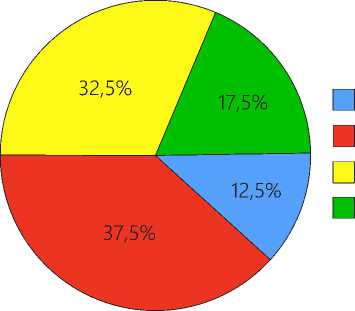
Frequently
Sometimes
Rarely Never
Figure 4: Reference to Online Sources for Medication
Summary of Discussion:
-
• Consumers aged between 18-27 years sometimes refer to online sources for medication. Most of them refer to online sources to check about the composition of medicines, alternatives to the medicines prescribed by their doctors, and the side effects of medicines.
-
• Consumers aged above 38 years do not find online sources reliable to refer for their medication. They
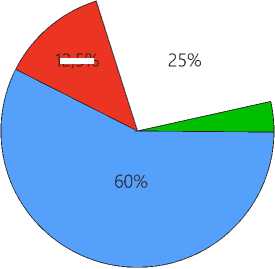
12,5%
□ Reputed Hospitals (Ex. Fortis, Apollo)
I Local clinics
□ Family Doctor
| Army hospital
Figure 5: Criteria for Selecting Healthcare Provider
Summary of Discussion:
-
• Consumers between 18-27 years, 28-37 years, and 38-47 years mainly preferred going to reputed hospitals. They believed that they could trust the healthcare services provided by these hospitals.
-
• Some of the consumers (approximately 25%) aged between 18-27 years and 28-37 years preferred going to family doctors, especially during an emergency, as they believed they provide better care and medication. Trust factor also plays a major role in this case.
-
• Consumers also had an opinion regarding visiting government hospitals. During the discussion, most of the consumers did not prefer going to Government hospitals due to lack of infrastructure, unavailability of proper nursing staff and doctors, lack of cleanliness, and as these hospitals lagged behind private hospitals in being digitally well equipped. Although one of the consumers (aged 27 years) believed that doctors’ quality in Government hospitals is very good, people avoid going to the government hospitals due to these factors. [14]
Question 5
This question helped to understand consumer satisfaction regarding their current healthcare provider. As depicted in Figure 6, most consumers, i.e., 90% are satisfied with their current healthcare provider.
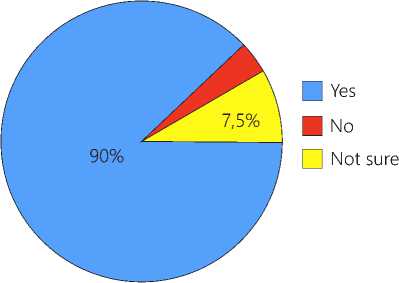
Figure 6. Customer Satisfaction with Current Healthcare Provider
Summary of Discussion:
-
• Consumers were satisfied with their current healthcare provider regarding service, facilities, and quality of treatment.
-
• One of the consumers was not satisfied with their current healthcare provider due to long wait hours and lack of care beyond the doctor’s office.
Question 6
This question helped to understand the various factors influencing consumers to select their healthcare provider. The factors included healthcare centers being digitally well equipped, customer experience, brand image, online ratings, word of mouth, cost, and other factors like the doctor’s experience, effectiveness, and a major role in selecting healthcare providers. As depicted in Figure 7, customer experience can
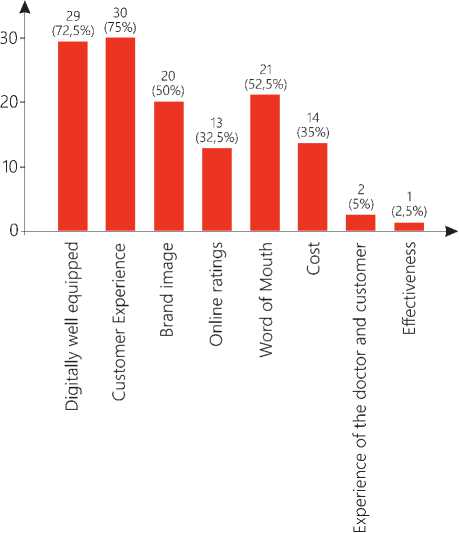
Figure 7. Factors for Selecting Healthcare Provider be considered a major influencing factor, followed by the healthcare center being digitally well equipped and then word of mouth.
Summary of Discussion:
It was noted that digitization had a huge impact on consumers. They wanted their healthcare providers to adopt the latest technologies to provide them with better diagnoses. The consumers believed that the present healthcare infrastructure needs to be transformed digitally in all quarters and levels. One of the consumers opined that in recent times of COVID-19, with the scarcity of physical hospital appointments, the entire healthcare system should channelize its operations to provide services using digital platforms.
Word of Mouth, especially from reliable sources (for example, patient’s relatives, close family members, friends), played a major role in determining healthcare providers’ choice. [15]
Question 7
This question helped to understand customer loyalty towards their healthcare provider. It can be seen that the majority of the consumers preferred going to the same healthcare provider. Figure 8 shows Customer Preference for Healthcare Provider.
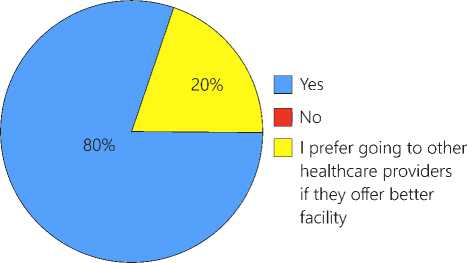
Figure 8. Customer Preference for Healthcare Provider
Summary of Discussion:
-
• Customers were mostly loyal towards their healthcare providers because of the trust factor.
-
• 8 out of 40 consumers preferred going to other healthcare providers if they were offered better services, customer experience, better technologies, and better offers.
Question 8
This question helped to understand whether the consumers were aware of whether their healthcare pro- viders were digitally equipped or not. It was also useful in analyzing whether most of the healthcare providers are digitally well equipped or not. It can be noted from Figure 9 that most of the healthcare providers (67.5%) that the consumers visit are digitally well equipped.
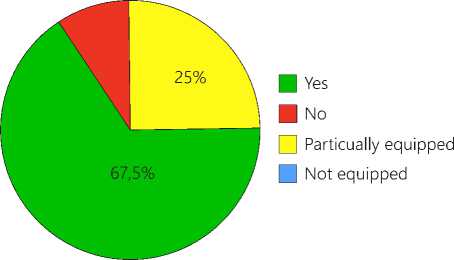
Figure 9. Digital effectiveness of Healthcare Provider
Summary of Discussion:
-
• The consumers between the age group 18-27 years and 28-37 years were more aware of the technologies used by their healthcare providers.
-
• It was evident from the discussion that consumers preferred hospitals that were digitally well equipped.
-
• It was also noted during the discussion that the consumers in the age bracket of 38 years and above were unaware of whether their healthcare providers adopted the latest technologies to enhance their experience.
Question 9
This question helped to give a clear view of whether consumers are aware of the latest technologies adopted by their healthcare providers. As seen in Figure 10, a mixed response was obtained from the consumers.
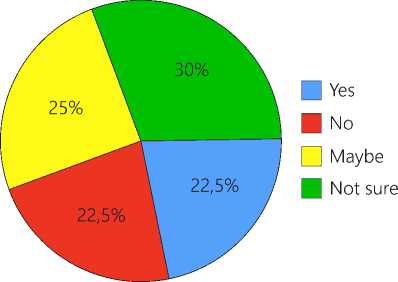
Figure 10. Awareness Regarding Digital Readiness of Healthcare Provider
Summary of Discussion:
-
• The consumers in the age bracket of 18-27 years and 27-37 years were more aware of whether their
140 | Cardiometry | Issue 20. November 2021
healthcare providers were digitally equipped or not.
-
• There is an equal distribution of unaware people, not sure or did not know about their healthcare centers’ digital readiness.
Question 10:
This question helped to understand various technologies that create awareness in consumers, which also helped to understand the technologies adopted by healthcare providers to provide a seamless customer experience to their consumers.
Summary of Discussion:
• Consumers were aware of Electronic Health Record system adopted by their respective healthcare providers to store their records.
• Consumers were also aware of the various Apps used by their healthcare providers to provide those services digitally.
• Some of the consumers were aware of the adoption of Artificial Intelligence by their healthcare providers.
4.2. Research Questions
Part 2(In-depth Interview)
Consumer Perspective:
-
1) Are you aware of any technologies used by your healthcare provider? (e.g., any specific app, tools to monitor your health, specific technology like AI)
-
2) If your healthcare center is digitally well equipped, how has it improved your experience?
-
3) Do you use any wearable and wireless device? (e.g., fit bit, MI band) Does your doctor keep track of that?
-
4) Would you prefer care beyond the doctor’s office? (For example. Request prescription refills electronically, receive reminders {via e-mail or text when it is time for follow up care}, communicate with your provider through secured mail, use remote or telemonitoring devices to monitor and record your health indicators)
-
5) Any improvement that you would like to suggest to your healthcare provider to improve your experience? (It can be related to technological aspect, service aspect)
Healthcare Provider Perspective:
-
1) What are the technologies used by your organization to enhance customer experience?
-
2) Is your organization taking any steps to make consumers aware of the technologies used?
-
3) What, according to you, are the important factors influencing consumers to opt for a particular healthcare provider?
•
-
• 4.2.2. Research Analysis:
Responses as per Consumer Perspective:
A total of ten consumers were interviewed indepth. The opinions of the consumers are based on both private hospitals and government hospitals.
(Age group varying between 24 and 50 years)
Question 1:
-
• It was noted that the consumers of age groups ranging from 24 to 30 years were well aware of the technologies used by their healthcare provider.
-
• There were also some opinions about government hospitals, which lagged in terms of being digitally equipped.
-
• Points covered by the consumers are as follows:
-
a. Reputed healthcare providers like Apollo use the personal assistant app to provide services like online appointments. The app uses the patient’s personal information to provide online consultation, and the data is stored online. The consumers do not have any issue in providing their personal information to such reputed hospitals. Also, consultation is provided by the doctors via video calls in case of an emergency.
-
b. Hospitals like Fortis use EHR and EMR (technologies) to store patient’s data. EHR is an electronic health record number, consists of all the healthcare records information, and maintains data confidentiality. EMR (Electronic Medical Record) number is used for first-time registration. These technologies are used to store patient’s information to provide them.
-
c. Private hospitals have adopted various technologies well. BM Birla hospital uses a digital watch connected through an app to monitor patient’s movement in the hospital.
-
d. QR code-based Apps are provided by certain hospitals and laboratories where patients can get the e-report of their tests by scanning the QR code (which is unique to each of the patients) provided to them by the hospital.
Question 2:
-
• The consumers felt that digitally well-equipped hospitals provide them with a better experience, whether it’s about maintaining their records or better diagnosis.
-
• Government hospitals are still not equipped digitally.
-
• Apollo Hospitals provide Health cards, where the patient’s data can be updated online without having to visit the hospital frequently.
-
• Since the hospitals have adopted various technologies (like a laser, for example), the operation time is minimized.
-
• With the help of Apps, it is easier to book appointments, and also, it is easier to locate hospitals present near one’s location.
-
• E-Prescription facilities have enabled patients to have their records handy.
Question 3:
-
• Some of the consumers used Fitbit, Mi-bands to monitor their health.
-
• One of the consumers reported their data (recorded in the wireless device) to their doctor.
-
• The consumers also came up with opinions about using electronic devices like Accu-Chek and Omron BP Monitoring System. (3 out of 10 consumers aged 35 and above used health monitoring devices to track their health).
Question 4:
-
• Consumers preferred care beyond the doctor’s office. They preferred to have follow-up reminders, e-prescriptions, and blogs to be shared via e-mail.
-
• Care beyond a doctor’s office cannot be available in government hospitals as they do not have such facilities.
Question 5:
-
• In terms of services, one of the consumers had an issue regarding interns who perform basic services like injecting syringes; he believed the interns had a laid-back attitude, due to which he had to suffer.
-
• One of the consumers also had an opinion regarding government hospitals having a lackadaisical attitude towards adopting technologies. He believed private hospitals were far better in terms of being digitally equipped. A lot of changed have to be brought about in terms of government hospitals.
Issue 20. November 2021 | Cardiometry | 141
-
• One of the consumers believed nursing staff’s behavior should be improved. More and more experienced nursing staff should be employed in hospitals.
-
• One of the consumers believed that hospitals should have more tie-ups with insurance companies to facilitate hassle-free payment.
-
• Cleanliness in government hospitals is still a concern.
Healthcare Provider Perspective:
A total of four persons who worked in the healthcare sector were interviewed in-depth.
Question 1:
-
• A health care professional working in the dental department usually said in a private hospital, the main technology adopted is cloud-based, which helps store the patient’s records digitally, which provides a seamless experience for both the patients and doctors. The same cannot be said about government hospitals as they still store records manually.
-
• A healthcare worker (working in the administrative department) believed that government hospitals are still not digitally well equipped. They are skeptical about adopting new technologies. There is still a lack of infrastructure due to which the patients’ experience could not be improved compared to private hospitals.
-
• A healthcare professional (General Physician) launched his app during COVID-19 to help patients in an emergency. The patients would describe their problems through the app, and accordingly, he would suggest proper diagnosis and upload the prescription.
-
• A healthcare professional (Oncologist) believed that introducing the latest technologies and equipment has helped treat cancers. Cutting-edge technology like cyclotron and PET-CT has been introduced; everything is cloud-based concerning storing patient information. The doctor has all the information regarding the patient even before the patient enters the doctor’s cabin.
Question 2:
-
• A healthcare professional working in the dental department opined that the patients are aware of the cloud-based technology used in her organization to maintain patient records. She also mentioned that the records were protected using cybersecurity tools to prevent a data breach. In government hos-
142 | Cardiometry | Issue 20. November 2021
pitals (one in which she is associated), the patients are aware that their case papers are being stored.
-
• A healthcare worker (working in the Administrative department) said that this was out of government hospitals’ scope.
-
• A healthcare professional (general physician) made sure that his patients were aware of his app; he sent a mailer to all his patients regarding the same.
-
• A healthcare professional (oncologist) said that since the cases of the patients that she handles are critical, each of the patients is made aware of the technologies used in their treatment.
Question 3:
• A health care professional working in the dental department felt that various factors influence any patient to choose a particular healthcare provider. Brand name of the provider, experience of the doctor, doctor’s behavior, care beyond doctor’s office, and digital readiness are factors.
• A healthcare worker (working in the administrative department) opined that other than doctor’s behavior and care, factors like availability of good nursing staff and hospital infrastructure matter a lot to patients.
• A healthcare professional (General Physician) said that factors like the availability of doctors in need of the hour, shorter response time from healthcare providers, and word of mouth played a major role. Other than that, brand image and digital readiness were factors that influenced consumers to opt for a particular healthcare provider.
• A healthcare professional (Oncologist) believed that the most important factor in gaining patients’ trust is maintaining transparency about their treatment. A doctor’s behavior plays a major role in enhancing the consumer experience. In the technological aspect, patients will always prefer healthcare providers who are digitally well equipped to provide them with a seamless experience.
5. Conclusion
6. Limitations
The study was undertaken to understand the various aspects affecting consumer behavior in the healthcare industry. The behavior of the consumers in the healthcare sector is quite different in comparison to other sectors. The study reveals that there are primarily five major factors influencing consumers in the healthcare industry: customer experience, digital readiness, brand image, word of mouth, and cost/expense. It can be noted from the research analysis that consumers are slowly becoming aware of the adoption of technologies by their healthcare provider. The healthcare providers are also keeping pace with the technological advancements to enhance the consumer experience. They are trying to adopt advanced technologies like AI, big data analytics, augmented reality, etc., to better diagnose.
The research paper’s scope was limited to Indian consumers, so globally, consumers might have different points of view. The research was conducted mainly with consumers residing in urban areas; rural area consumers might have a different opinion regarding healthcare consumer behavior.
Scope of Future Research
The healthcare industry is adopting the latest technologies to enhance patients’ experience. Advanced technologies such as augmented reality can benefit the healthcare industry by providing real-time access to patient data; it can also bring huge value to visualize health issues better. The future of research can be based on the adoption of advanced technologies in healthcare. Also, the scope of the study can be extended to consumers residing in rural areas. The parameters of the study can be extended to global consumers to gather their points of view.
Conflict of interest
None declared.
Author contributions
The authors read the ICMJE criteria for authorship and approved the final manuscript.
Список литературы Healthcare consumer behaviour: the impact of digital transformation of healthcare on consumer
- Dan Gingis. As Healthcare Goes Digital, Consumer Engagement, And Experience Improve. 2019. [Online]. Available: https://www.forbes.com/sites/dangingiss/2019/07/10/as-healthcare-goes-digital-consumer-engagement-and-experience-improve/#329f91b096e6.
- Olgun Kitapcia, Ceylan Akdoganb, Ibrahim Taylan Dortyolb, The Impact of Service Quality Dimensions on Patient Satisfaction, Repurchase, Procedia – Social and Behavioral Sciences, pp. 161-169, 2014.
- Dhyana Sharon Ross, Dr. R. Venkatesh. An Empirical Study of the Factors Influencing Quality of Healthcare and Its Effects on Patient Satisfaction. International Journal of Innovative Research in Science, Engineering and Technology, vol. 4, no. 2, pp. 54-59, 2015.
- Ebrahim Randeree, “Exploring Technology Impacts of Healthcare 2.0 Initiatives,” TELEMEDICINE and e-HEALTH, pp. 255-260, 2009.
- Volker Tresp, J. Marc Overhage, Markus Bundschus, Shahrooz Rabizadeh. Going Digital: A Survey on Digitalization and Large-Scale Data Analytics in Healthcare. Proceedings of the IEEE. 2016; 104(11): 2180-206.
- Smagulov S, Smagulova V. “Digital Transformation of Healthcare,” Intellectual Archive, pp. 31-52, 2019.
- Kai Klinker, Manuel Wiesche, Helmut Krcmar, “Digital Transformation in Health Care: Augmented Reality for Hands-Free Service Innovation,” Information Systems Frontiers, pp. 1-13, 2019.
- Gârdan D, Gârdan I. “Healthcare services consumer behavior in the light of social norms influence. Annals of “Spiru Haret.” Economic Series,” Deloitte, 2015. [Online]. Available: https://www2.deloitte.com/us/en/pages/operations/articles/health-care-buildinga-digital-supply-chain-examples.html.
- Radulescu V, Cetina I, Orzan G. “Key Factors That Influence Behavior of Health Care Consumer, the Basis f Health Care Strategies. Contemporary Readings in Law and Social Justice,” [Online]. Available: https://www.questia.com/library/journal/1P3-3020199651/key-factors-that-influence-behavior-of-health-care.
- “Augmented Reality in Healthcare.” [Online]. Available: https://www.plugandplaytechcenter.com/resources/augmented-reality-healthcare.
- Jandavath RK, Byram A. “Healthcare service quality effect on patient satisfaction and behavioral intentions in corporate hospitals in India,” International Journal of Pharmaceutical and Healthcare Marketing, pp. 48-74, 2016.
- Hahn H, Schreiber A. Digital Transformation. E-Health, pp. 311-334, 2019.
- Lee D, Yoon SN. Application of Artificial Intelligence-Based Technologies in the Healthcare Industry: Opportunities and Challenges. International Journal of Environmental Research and Public Health. 2021; 18(1): 271.
- Chetana MR. Factors Causing Transform In Consumer Behaviour during Covid-19 Pandemic-A Study.
- Osipov VS, Skryl TV. Impact of Digital Technologies on the Efficiency of Healthcare Delivery. In IoT in Healthcare and Ambient Assisted Living (pp. 243- 261). 2021. Springer, Singapore

